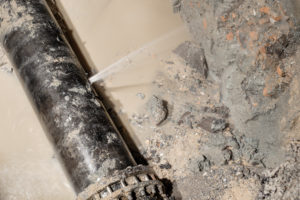 The importance of water conservation intensifies in direct proportion to the increasing concerns about the environment. The United States has implemented effective systems to ensure that Americans have access to clean, potable water. There is, however, a persisting problem in American households that if corrected, can add significantly to the country’s clean water supply.
The importance of water conservation intensifies in direct proportion to the increasing concerns about the environment. The United States has implemented effective systems to ensure that Americans have access to clean, potable water. There is, however, a persisting problem in American households that if corrected, can add significantly to the country’s clean water supply.
The EPA on Wasted Water
A leaky garden faucet may seem trivial; but, if you multiply the wasted water by the number of leaky faucets all over the United States, the result is staggering. According to the EPA, ordinary household leaks in the US can accumulate to 1 trillion gallons a year. That’s equivalent to the consumption of 11 million households.
Although the government launched more water conservation and reuse programs in the last two decades, the country – and the world – will benefit further if more households will be active participants.
Water Conservation Has Financial Benefits
Aside from preventing clean water shortage in the future, households have another incentive for saving water: it can cut their bills down by 10%. This includes measures like repairing gaskets, sealing pipe leaks, replacing leaky showerheads and updating old toilets.
This is also why state governments actively promote water conservation. In Utah, the Division of Water Resources has a State Water Plan. In 2012, the Division proposed Water Audits and Leak Detection Programs, which would look at how well the state’s municipal water suppliers are monitoring leaks. If the public supports government efforts like this, the results should be very promising. A household can support the cause in little ways, from using a glass when brushing to calling professionals to respond to emergency plumbing issues.
Plugging 100% of leaks across the country is impossible. Still, even if only a fourth or an eighth of that demographic will find long-term solutions, the amount of clean water saved will be enough to supply more than 1.3 million households.

